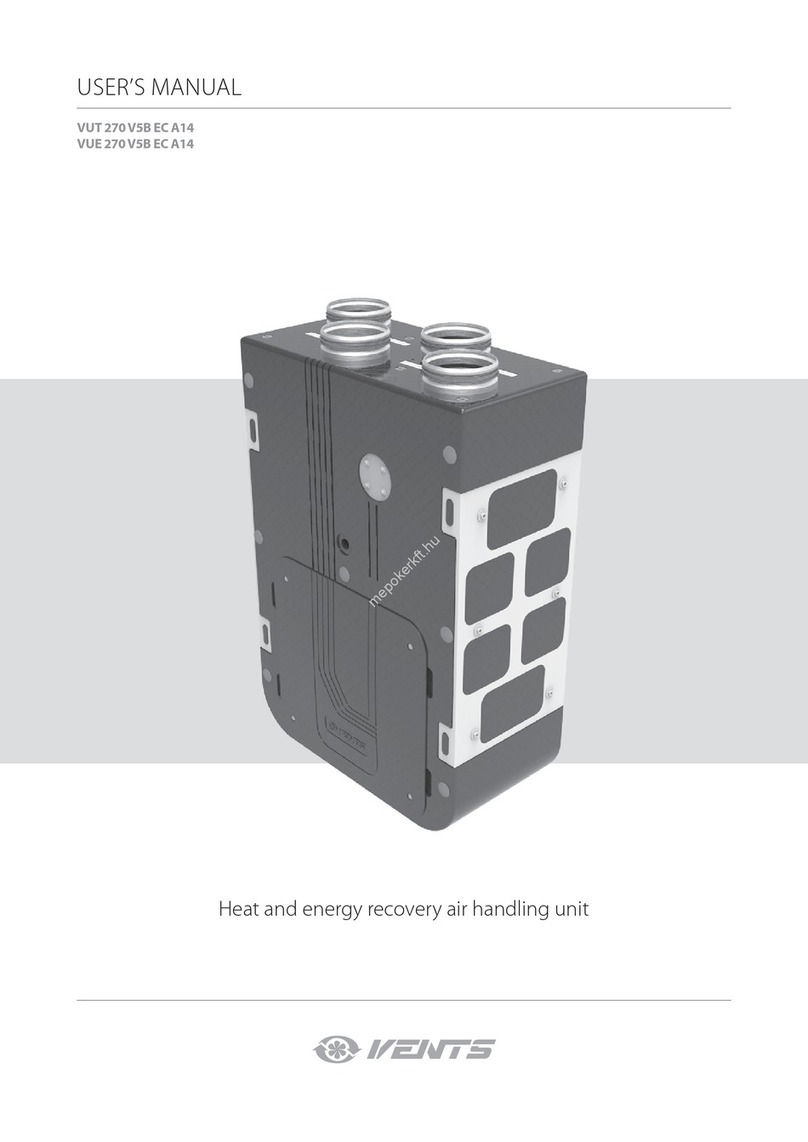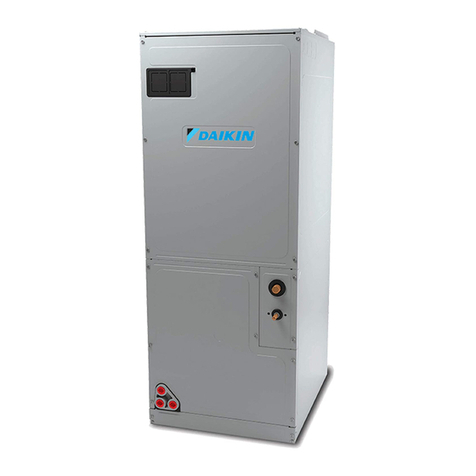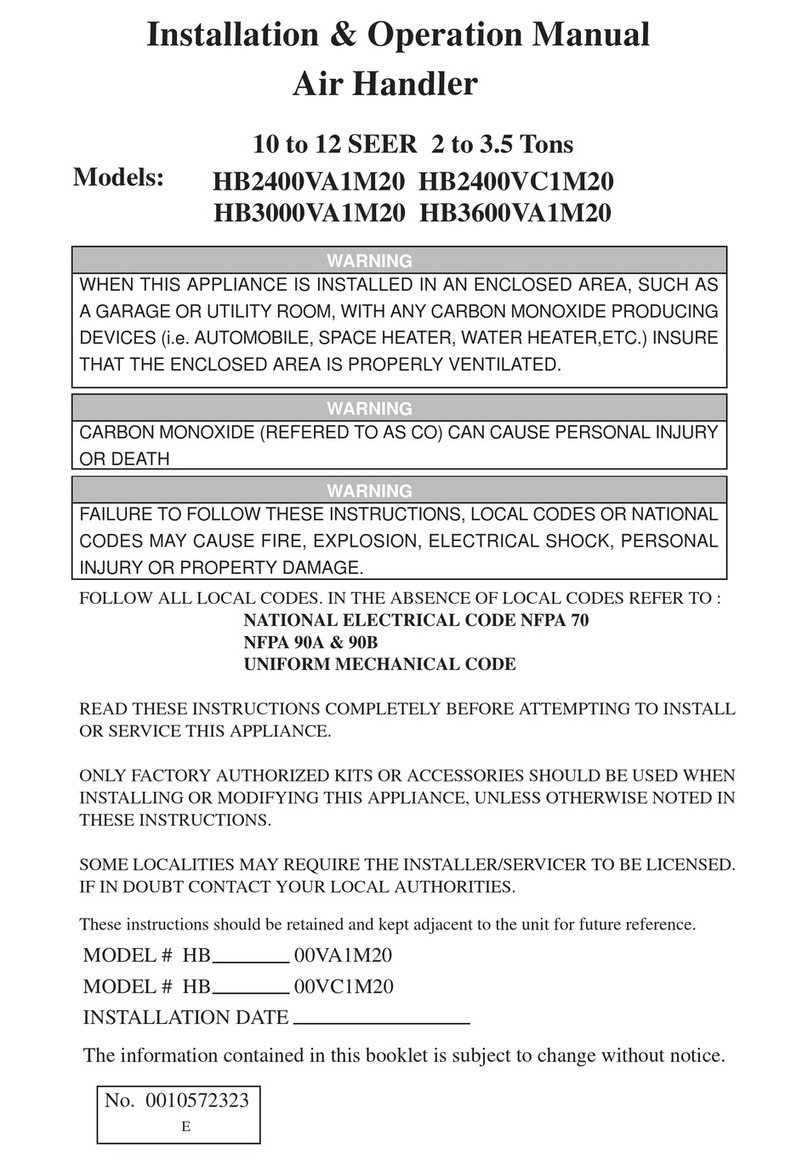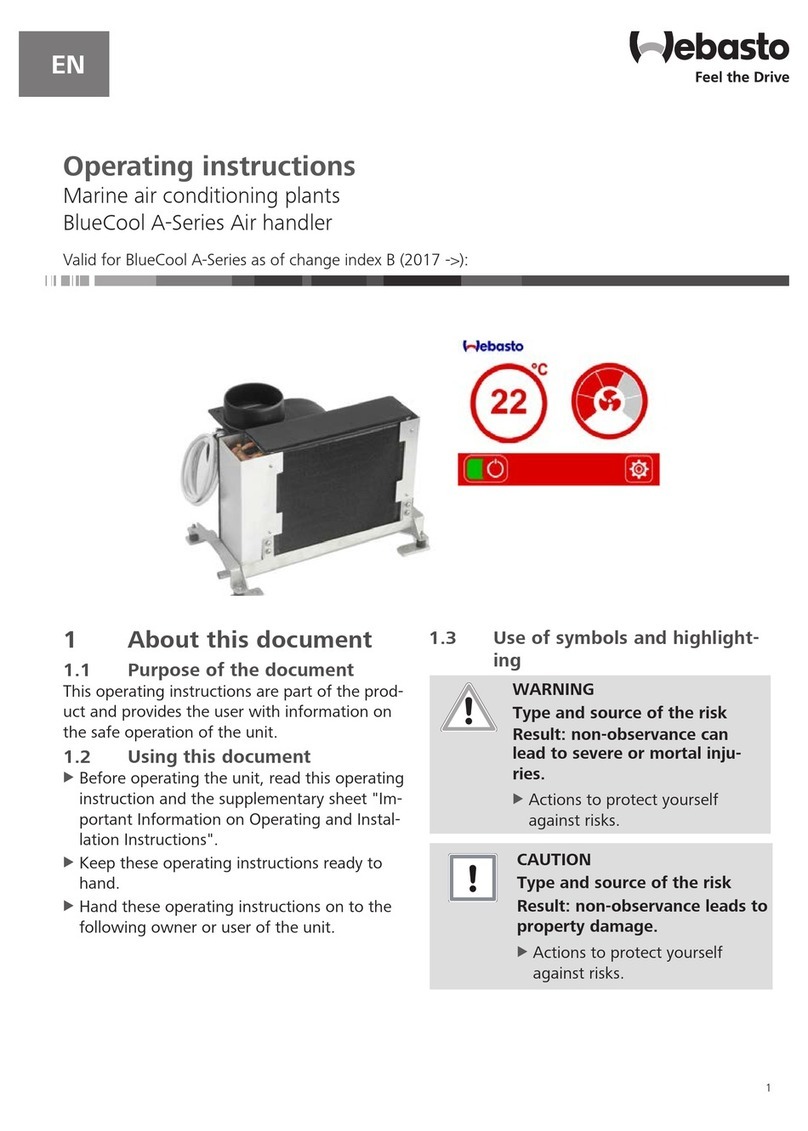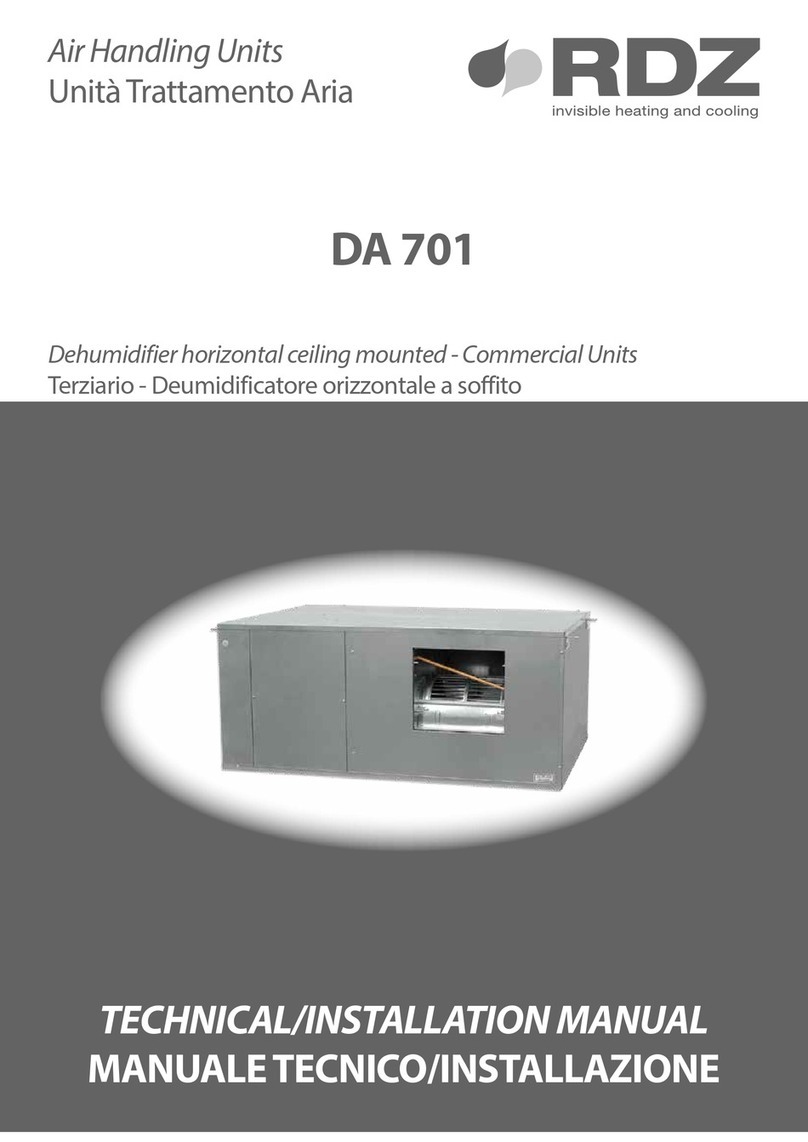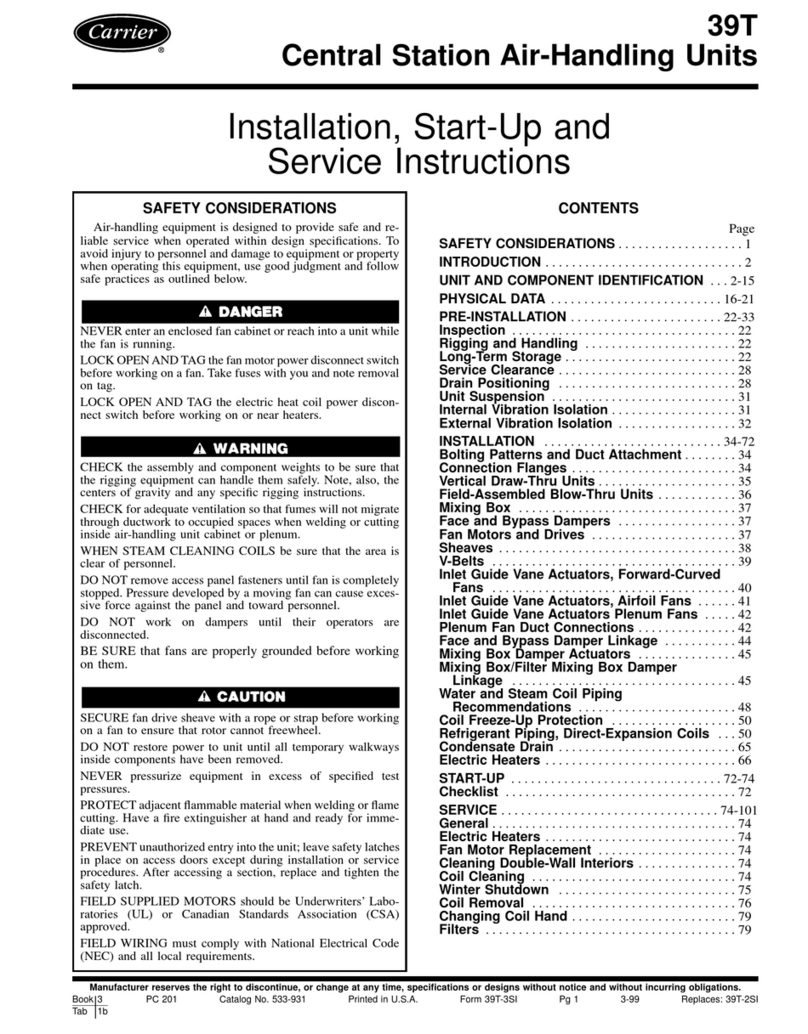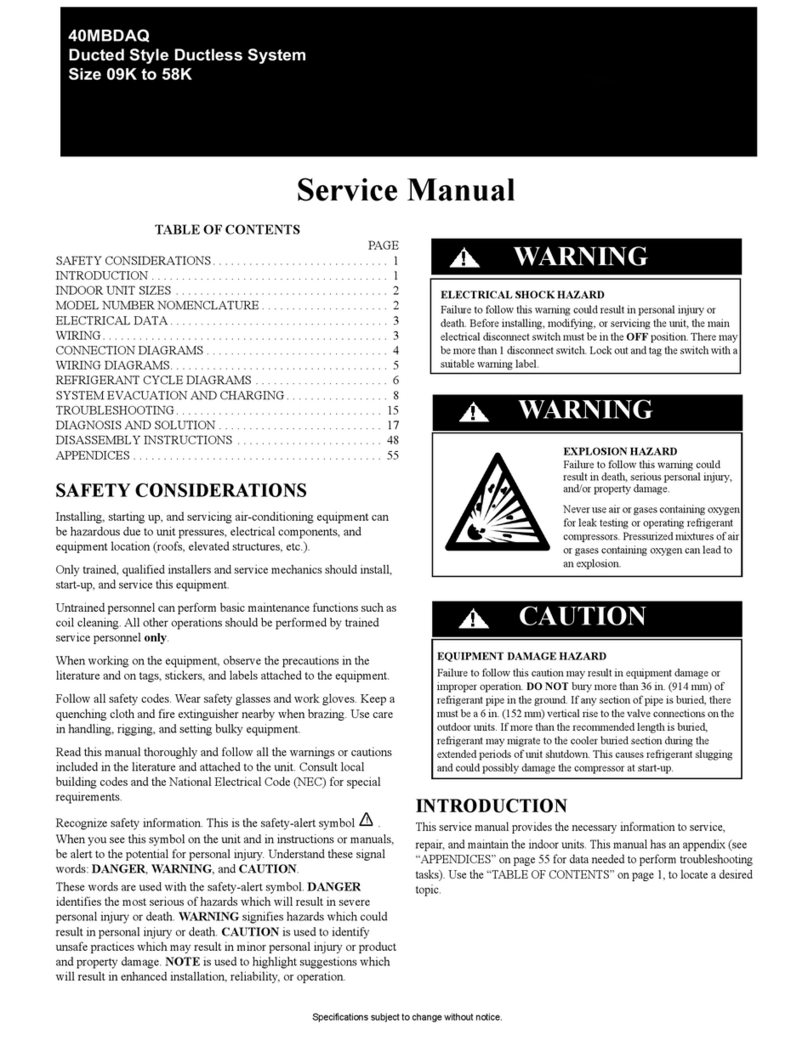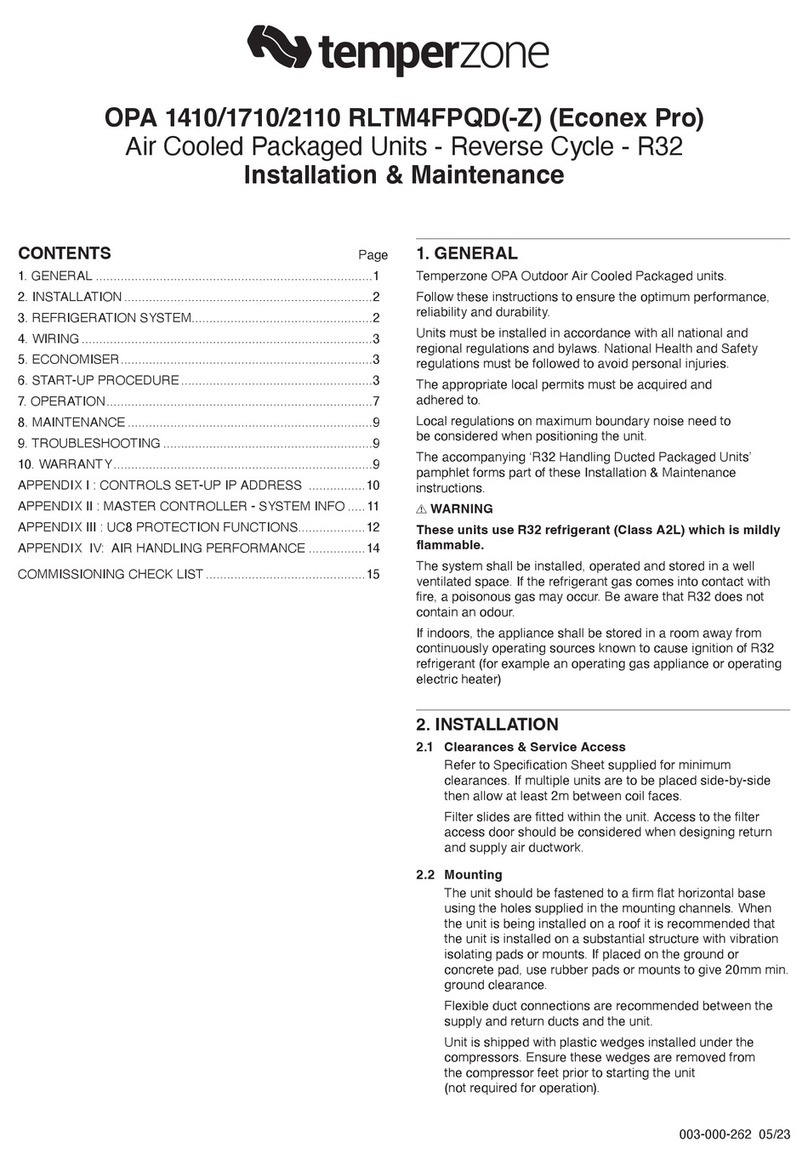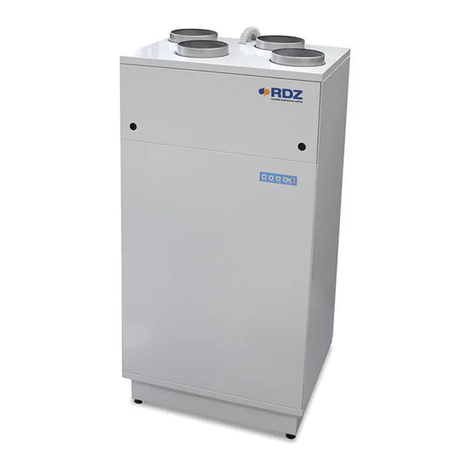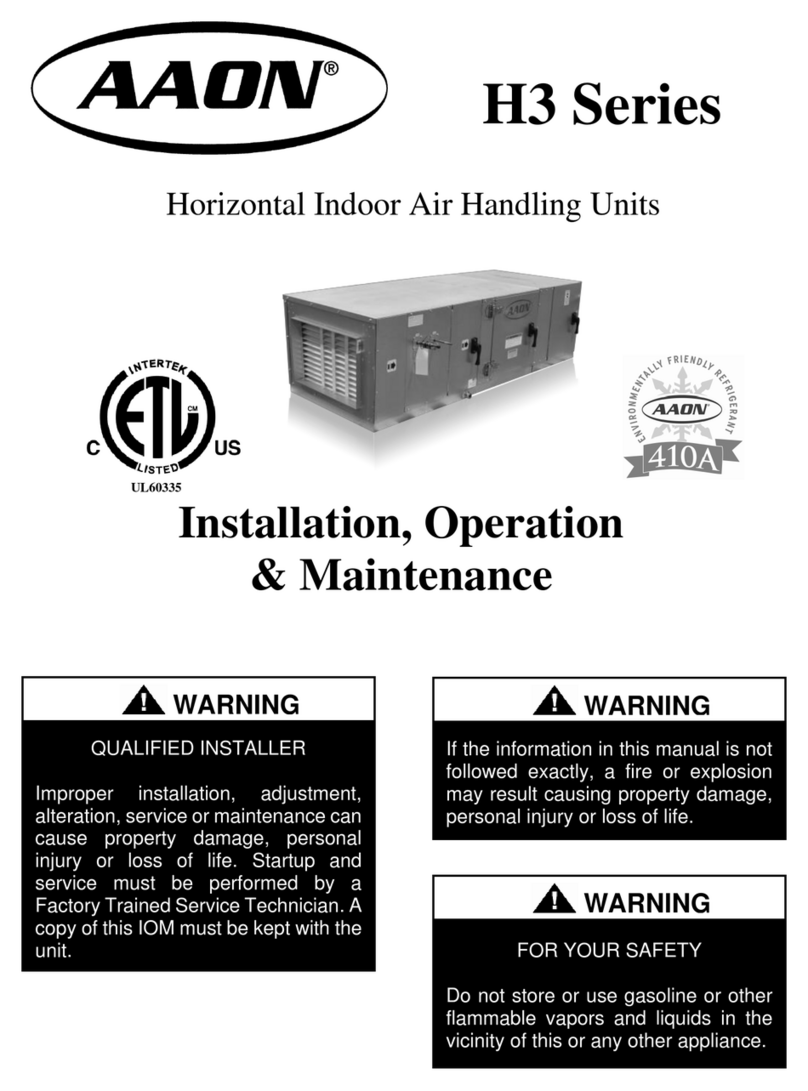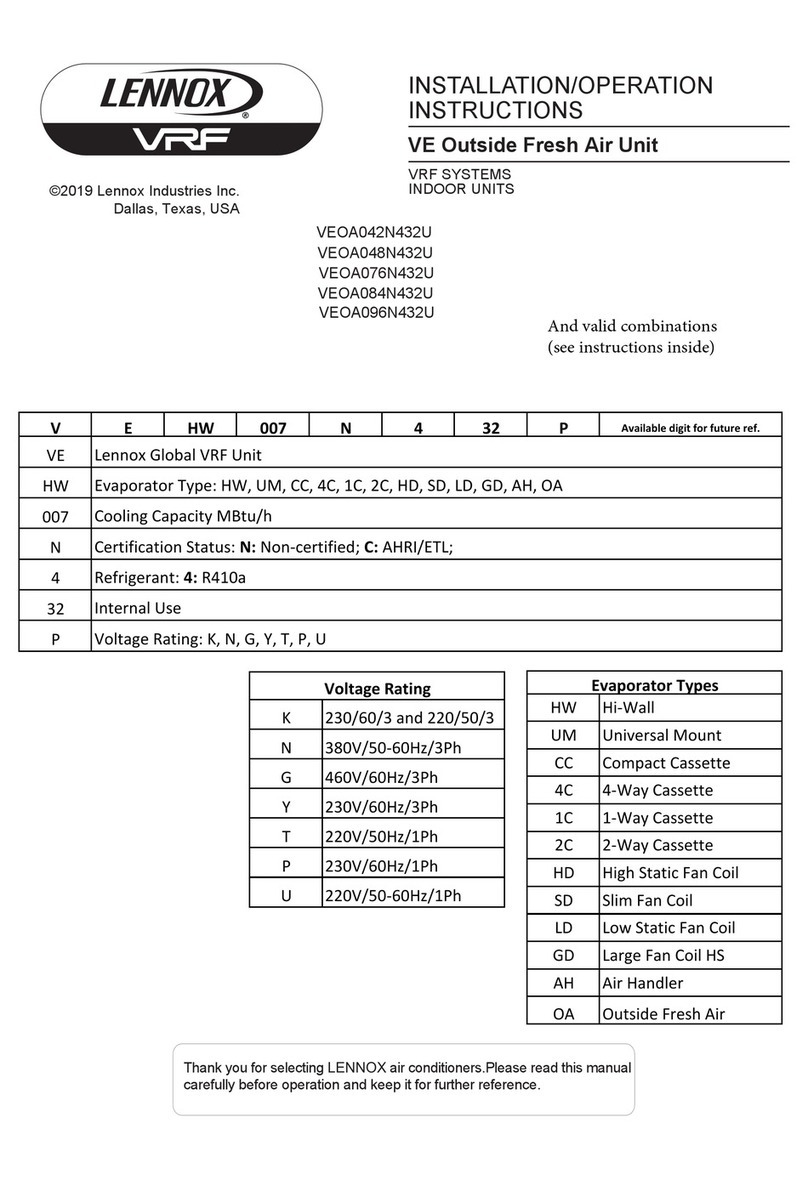Connessione meccanica delle sezioni accessorie integrative
Ogni sezione accessoria è già corredata di piastre di supporto antivibranti premontate, analoghe a quelle installate sulla unità base.
Disporre le sezioni e l’unità base secondo la corretta sequenza dei trattamenti che l’aria dovrà subire ed accostarle frontalmente una
accanto all’altra, rispettando la direzione del flusso d’aria. Per quanto possibile, in funzione del numero di sezioni accessorie e dei
pesi complessivamente in gioco, fissare preventivamente tra loro le varie porzioni di macchina secondo il criterio in seguito descritto
e poi staffarle a soffitto (si veda “Posizionamento della macchina”).
Con riferimento alla figura 5, qui di seguito sono indicate le sequenze di connessione:
1 Applicare la guarnizione di tenuta fornita in dotazione sulla superficie di accoppiamento
2 Accostare i moduli da fissare.
3 Passare la vite M8 x 25 (1) attraverso i fori adiacenti, avendo cura che sui lati esterni siano presenti le relative rondelle(2).
4 Avvitare a mano il dado (3).
5 Completare il serraggio con apposito attrezzo
6 Fissare le piastrine superiori fornite separatamente assieme alle relative viti
Collegamenti aeraulici
• Dimensionare le canalizzazioni d’aria in funzione dell’impianto e delle caratteristiche aerauliche dei ventilatori dell’unità
• Adeguare l’emissione sonora dell’apparato in funzione della destinazione d’uso, valutando la possibilità di inserire idonei
attenuatori acustici
• Utilizzare per quanto possibile canali coibentati per prevenire la formazione di condensa.
• Evitare di trasmettere le eventuali vibrazioni dell’apparato in ambiente, interponendo un giunto antivibrante in
corrispondenza dei punti aspiranti e prementi.
• Garantire la continuità elettrica fra canale e macchina tramite un cavo di terra.
Collegamenti idraulici
Le operazioni di installazione e collegamento delle tubazioni sono operazioni che possono compromettere il buon funzionamento
dell’impianto o peggio, causare danni irreversibili alla macchina. Queste operazioni sono da effettuarsi da personale specializzato.
Collegamento scarico condensa
• Il sistema di evacuazione della condensa deve prevedere un adeguato sifone per consentirne il deflusso in condizioni di
depressione.
• Il sifone deve essere eseguito secondo le indicazioni della figura 6
• Il sifone deve infine essere dotato di tappo per la pulizia nella parte bassa o deve comunque permettere un veloce
smontaggio per la pulizia.
• Il percorso del tubo di scarico condensa deve avere sempre una pendenza verso l’esterno.
• Assicurarsi che il tubo per il deflusso della condensa non solleciti l’attacco di scarico dell’unità.
Collegamento batterie di scambio termico ad acqua
• Le batterie di scambio termico sono fornite di attacchi “femmina” con filettatura gas.
• Le operazioni di serraggio vanno effettuate con cautela per evitare danneggiamenti dei collettori in rame della batteria.
• Il percorso dei tubi deve essere studiato in modo da non creare ostacoli in caso di estrazione della batteria dell'unità.
• Entrata e uscita acqua devono essere tali da consentire lo scambio termico in controcorrente: seguire quindi le indicazioni
delle targhette ENTRATA ACQUA e USCITA ACQUA.
• Prevedere una valvola di sfiato in alto ed una di scarico in basso.
• Staffare adeguatamente i tubi all'esterno della unità per evitare di scaricarne il peso sulla batteria.
• A collegamento effettuato spingere bene la guarnizione esterna in gomma contro il pannello per evitare trafilamenti d'aria.
• La coibentazione deve giungere a filo pannello per evitare pericolo di scottature.
• Prevedere, a livello di regolazione, l'intercettazione della batteria lato tubi a ventilatore spento per evitare surriscaldamento
dell'interno della centrale con possibile danneggiamento di alcuni componenti.
• Prevedere dispositivo antigelo.
• Prevedere valvole di intercettazione per isolare la batteria dal resto dei circuito in caso di manutenzione straordinaria.
• Nel caso di installazione in zone con climi particolarmente freddi, svuotare l’impianto in previsione di lunghi periodi di
ferma dell’impianto.
IMPORTANTE: SI FA DIVIETO DI METTERE IN FUNZIONE L’UNITA’ SE LE BOCCHE DEI VENTILATORI
